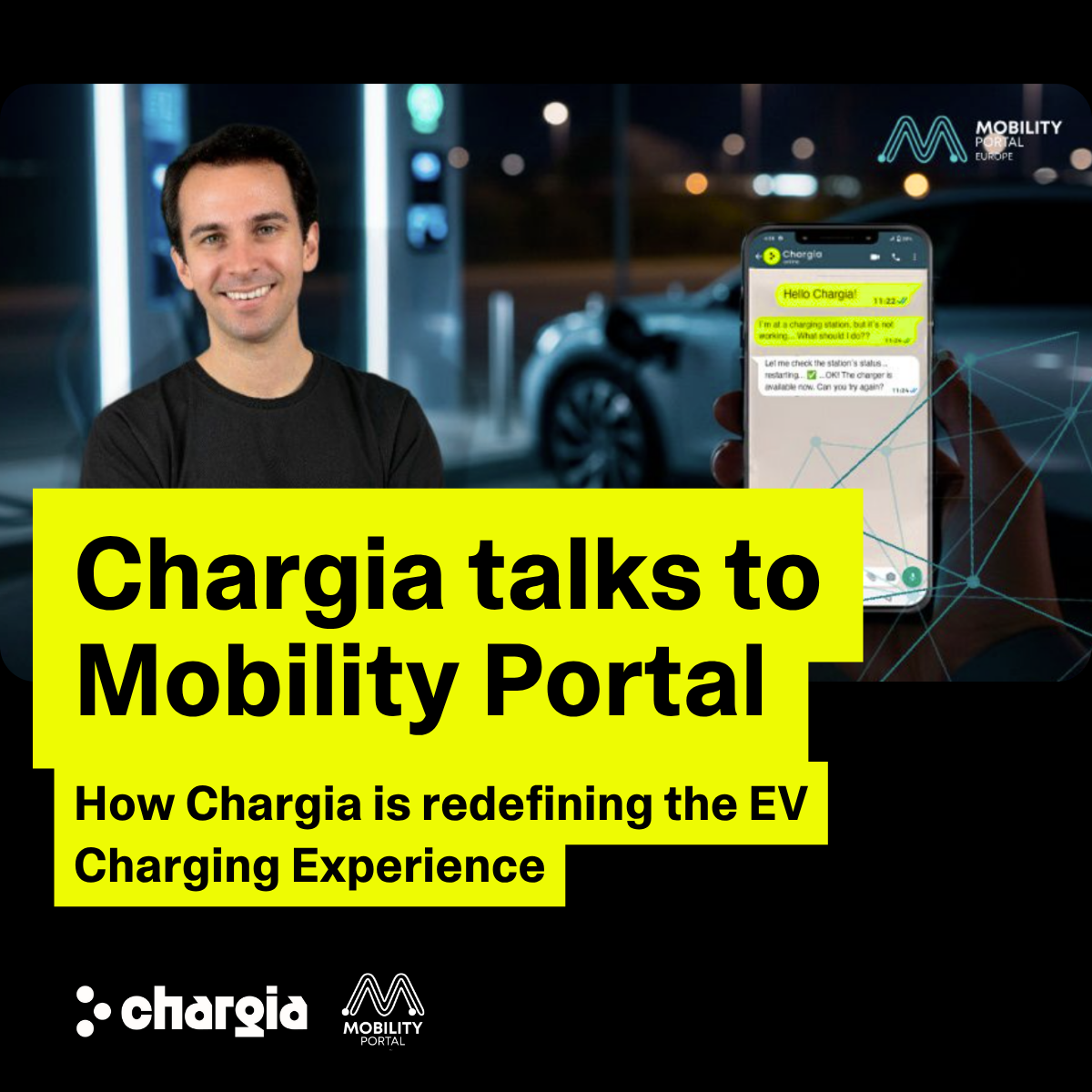Chargia is gearing up for the launch in Spain of a virtual assistant that promises to transform the charging experience using artificial intelligence, WhatsApp operation, and future integration of payments with Chargia Pay.
Entrepreneurial DNA, experience in the electromobility sector, and first‑hand use of electric vehicles — Eduardo Medina combined all these elements to found Chargia together with Martín Fimia Casalilla.
“We want to be the ChatGPT for electric vehicles,” says the entrepreneur. “So that just by writing on WhatsApp you have everything you need.”
The initiative addresses the challenges users face during charging, the increasing demands on operators, and the possibility of cutting customer service costs by up to 80%. In his previous role at Activacar, Medina identified this as a recurring problem.
The system allows, via a chatbot, to manage incidents, plan routes, locate stations, and soon make payments — all within a single WhatsApp conversation. The model tackles critical pain points in the charging experience for both drivers and Charge Point Operators (CPOs).
Operational savings and scalability for operators
During his tenure as CEO and co-founder of Activacar, Medina realized that user support was one of the most expensive areas for operators. Chargia proposes reducing support costs by up to 80% compared to traditional models. This saving directly improves operating margins, especially since many stations are not yet optimally profitable. “The CPO’s model depends on EV sales and point utilization. If we improve the margin with our proposal, everyone says: let’s try it,” adds Medina.
Additionally, the system allows service scaling without needing to expand infrastructure — a key factor given the projected growth in the electric vehicle fleet.
Chargia Pay: Payments integrated within the same conversation
One of the innovations under development is Chargia Pay, a feature that will enable payments directly through the messaging app. “The goal is that all communication in the electric vehicle experience occurs within WhatsApp,” Medina explains, eliminating the need to resort to external apps.
This includes everything from finding charging points to starting sessions and managing payment. The proposal aims to solve a frequent industry problem: the multiplicity of apps and platforms required to perform basic services like charging or checking availability.
The development is built on the WhatsApp platform — despite its technical complexities — due to its high penetration and daily use. Chargia emphasizes that this choice greatly simplifies the end‑user experience: “It’s very easy once you make them understand that simply by saving a contact you can start messaging our assistant,” says the CEO.
4/7 multilingual support and deep integration
Moreover, the assistant is designed to operate 24/7 and in multiple languages, automatically adapting to the user’s language. Through integration with operator databases, the system can perform actions like restarting chargers, unlocking plugs, or issuing support tickets — all within the same conversation.
The solution emerges in a period of electromobility expansion, but also growing questions about the economic viability of CPOs’ business models. In a market like Spain — which has seen an 83% year‑on‑year growth in electric vehicle registrations — Medina warns: “It won’t be sustainable to provide user support via telephone with the increase in charging that we are going to have.”
In this context, Chargia presents itself as an adaptable technological tool capable of meeting the demands of an increasingly digitized environment.
Business model and application verticals
Chargia operates through two verticals:
-
The charging experience, which focuses on everything that happens during a vehicle charge — in this case, the operator is the direct client and benefits from support automation.
-
The travel experience, targeting the end user, who can interact with the assistant to get information on station availability, route planning, and trip conditions.
The system offers recommendations based on the car model, battery capacity, charger power, and even terrain elevation. “We are including variables such as how downhill or uphill terrain affects battery consumption,” says the founder. Furthermore, results include links to navigation platforms, allowing users to start their journey directly from the vehicle.
This article is based on an interview originally published by Mobility Portal. We thank them for the opportunity to share our vision for a smarter, more seamless EV charging experience.


